Bold, Brilliant & Bad: Women in History
Table of Contents
Preface
History is often written by the loudest voices and the most dominant powers but between the headlines of empires and battles are quieter stories—equally powerful, equally human. This book is about women who shaped the world in ways both grand and subtle. Some ruled empires; others changed science. Some fought for justice, while others became infamous for their cruelty. They were saints, scholars, rebels and rogues but each left a mark.
The inspiration behind this collection comes from a desire to explore, not just what these women did, but who they were and what drove them. For older readers—those who’ve lived through their own chapters of change and challenge, there’s something especially meaningful in rediscovering the stories of women who didn’t always have a voice in their own time but who now deserve to be heard. For the younger reader many stories are lessons to be learnt and paths to follow.
Each chapter stands alone, allowing you to dip in and out as curiosity calls. You’ll find heroes and villains, triumph and tragedy, brilliance and contradiction, because real women, like real history, are rarely one thing.
Whether you’re here to learn, reflect or simply enjoy a good story well told, thank you for joining us. May you come away from these pages with a deeper appreciation for the women who shaped our past and continue to inspire our future.
Kate Courtney
Catherine of Valois
Catherine of Valois. Mother of a Dynasty. History's Reluctant Game-Changer.
Catherine of Valois was born in 1401 into the House of Valois, a royal lineage draped in power and prestige—but shadowed by instability. As the daughter of King Charles VI of France, her early life was shaped more by chaos than comfort. Her father, though king, suffered frequent episodes of severe mental illness. In his most delusional states, he believed he was made of glass or failed to recognize his own family. The court often governed without him, and France teetered on the edge of collapse.
Her mother, Queen Isabeau of Bavaria, was no pillar of strength either. Lavish, political and emotionally absent, she was often criticized for her detachment from her children’s lives. Catherine grew up amid a fractured royal household during the Hundred Years’ War, a brutal and drawn-out conflict between France and England. Internally, France was no less divided—ripped apart by rival factions fighting for control. Catherine entered this world not as a leader, but as a pawn on a chaotic chessboard.
A Political Bride
Today, many know Catherine through her romanticized portrayal in Shakespeare’s Henry V, where she appears as a charming French princess being wooed by the English king. But the truth behind that portrayal is far more politically charged.
Henry V had little interest in courtly love—what he wanted was a crown. The marriage negotiations were part of a much larger diplomatic strategy. In 1420, the Treaty of Troyes was signed, making Henry the heir to the French throne and securing his marriage to Catherine. This not only sidelined Catherine’s own brother, the Dauphin Charles (the future Charles VII), but also aimed to unite the crowns of England and France under English rule.
The marriage, held in Troyes on June 2, 1420, was more alliance than affection. Catherine later traveled to England and was crowned Queen Consort at Westminster Abbey in 1421. Her time with Henry was brief—he soon returned to military campaigns in France. Their only child, the future Henry VI, was born later that year in December. Henry V never met his son; he died of illness in August 1422 during the siege of Meaux. Catherine, just 20 years old, was now a widow and mother to an infant king.
Life as a Queen Dowager
In line with English custom, Catherine’s life as a dowager queen came with restrictions. Remarriage was discouraged, especially without the king’s council’s approval. The fear was that a new husband—and any children they might have—could pose a threat to the throne. Her brother-in-law, Humphrey, Duke of Gloucester, controlled her household and made sure her personal freedom was tightly managed.
But Catherine’s story didn’t end with widowhood. In time, she formed a discreet and controversial relationship with Owen Tudor, a Welsh courtier who had served under her late husband. Initially appointed as keeper of her wardrobe, Owen became a trusted presence in Catherine’s household. Their relationship, though never publicly celebrated, evolved into a partnership—one that would change the course of English history.
By the mid-1430s, Catherine and Owen were living together and raising a family. The exact date of their marriage remains unknown, and while it wasn’t officially sanctioned, no legal or religious challenges to its legitimacy ever surfaced. It’s worth noting that Owen had been granted English legal status by Parliament in 1432—a rare step for a Welshman and likely tied to his connection with the queen.
A Quiet Rebellion with Lasting Consequences
Catherine’s relationship with Owen Tudor was both a personal act of defiance and a quiet rebellion against the restrictions placed on widowed queens. She broke custom by marrying—without permission—six years after Henry V’s death. Together, they had several children, including Edmund Tudor, father of Henry VII, the first monarch of the Tudor dynasty.
Though Catherine never wielded power in the traditional sense, her private choices reshaped English royalty. By following her heart and building a life outside the court’s control, she inadvertently founded a new royal line—one that would go on to rule England for over a century.
Catherine died in January 1437 at just 35 years old, likely from complications related to childbirth. After her death, Owen Tudor was arrested for marrying a queen dowager without royal permission—a serious offense at the time. He was imprisoned in Newgate, briefly escaped, and was later held at Windsor Castle. Though eventually pardoned and even welcomed into King Henry VI’s household, his fate took a darker turn during the Wars of the Roses.
In 1461, Owen Tudor was captured after the Battle of Mortimer’s Cross and executed by Yorkist forces. His death was brutal, but his legacy, through his descendants, endured.
Legacy
Catherine of Valois never sought to change history. She didn’t lead armies or govern kingdoms but through quiet resilience and personal courage, she altered the course of English royalty. Her life is a reminder that the most lasting impacts can come from the most unexpected places.
In a time when queens were expected to obey, fade into the background or serve only as political tools, Catherine dared to live—and love—on her own terms.
"Sometimes, the most powerful moves come not from the queen on the board—but from the one who refused to stay a pawn."
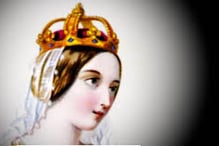

Rosalind Franklin
To listen to the podcast click here
Rosalind Franklin: The Woman Behind the Double Helix—and So Much More
Born in London in 1920 to a well-educated and supportive Anglo-Jewish family, Rosalind Franklin grew up in an environment that valued intellect and determination. From an early age, she was fiercely intelligent, curious, and driven—traits that would define her short but brilliant life. Her upbringing instilled in her both a strong work ethic and a quiet confidence, even as she faced the many challenges of being a woman in a male-dominated field.
Though proud of her heritage, Franklin identified as agnostic. She had a sharp wit and a serious nature, often more interested in science books than socializing. At just 11, she enrolled at St. Paul’s Girls’ School in London, where she quickly stood out for her academic excellence, particularly in science. By age 16, she was already certain of her future: she would become a scientist.
In 1938, Franklin entered Newnham College, Cambridge, to study chemistry—a bold move at a time when higher education for women was still treated as a novelty. Despite facing gender bias from professors and administrators, she earned top marks and, in 1941, graduated with Second Class Honors. Cambridge did not yet award degrees to women but Franklin didn’t wait for official recognition—she was already forging her own path.
Early Contributions: Fuel and Flame
With World War II in full force, Franklin took on practical research at the British Coal Utilisation Research Association. Her work focused on the structure of coal and how it released gases, contributing to more efficient fuels and helping improve gas masks for soldiers and civilians. This wartime research formed the basis of her PhD thesis and resulted in five published papers—an outstanding achievement for any young scientist, let alone a woman in the 1940s.
In 1947, Franklin moved to Paris to work with crystallographer Jacques Mering, where she mastered X-ray crystallography, a technique that would later define her legacy. It allowed her to study materials at the molecular level and she used it to uncover how coal transformed into graphite. These foundational discoveries continue to influence modern materials science.
Cracking the Code of Life
Rosalind Franklin’s name is most often associated with DNA—and for good reason. In 1951, she returned to London to work at King’s College, where she applied her crystallographic skills to biological molecules. It was here that she captured Photograph 51, the most famous X-ray image in the history of science. That single photo provided clear evidence of the helical structure of DNA.
Yet Franklin’s crucial contributions were overlooked at the time. Without her consent, the image was shown to scientists James Watson and Francis Crick, who used it—alongside other unpublished data—to finalize their model of the DNA double helix. In 1962, Watson, Crick, and Maurice Wilkins received the Nobel Prize. Franklin, who had died four years earlier, was never publicly credited in her lifetime.
But Franklin was no passive victim. Recent scholarship reveals that she was actively working toward the same conclusions and fully grasped the importance of her findings. She was not left behind—she was running a parallel race.
A Second Act: Viruses and Vision
In 1953, disillusioned but undeterred, Franklin left King’s College for Birkbeck College, joining the lab of John Bernal. There, she turned her focus to viruses, applying her crystallographic techniques to study the tobacco mosaic virus (TMV), which affects plants. Collaborating with Aaron Klug, she revealed how the virus’s genetic material was arranged within its protein shell—a major leap forward in virology.
Franklin went on to study the polio virus, bringing the same precision and persistence to her research. She published nearly 30 papers in her lifetime and became known for her rigor, creativity and independence as a scientist.
A Life Cut Short—but Never Forgotten
Rosalind Franklin died of ovarian cancer in 1958 at the age of 37. Her life was tragically short, but her impact was profound. She helped build the foundation for modern molecular biology and virology, and her legacy continues to inspire scientists—especially women—around the world.
Over time, Franklin’s role in the DNA story has been reevaluated, and rightly so. She was not simply “the woman behind the double helix.” She was a scientific pioneer in her own right, whose name deserves to stand alongside the greats. From the structure of coal to the mysteries of life itself, Rosalind Franklin illuminated the invisible—and changed science forever.
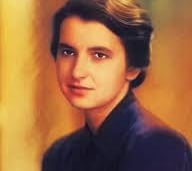


Princess Diana
To listen to the podcast click here
Princess Diana: The People’s Princess
Diana Frances Spencer was born on July 1, 1961, into the aristocratic Spencer family, with noble roots stretching back to the Tudors. Though she grew up amid privilege and proximity to royalty—playing with young princes and living on the grand Althorp estate—her early years were not free of heartache. At just seven, Diana watched her parents’ marriage fall apart in a bitter divorce. Her mother left the family and Diana and her siblings remained with their father, a man she loved deeply but who could be distant and emotionally reserved.
By all accounts, Diana longed for affection and emotional security from a young age. Her childhood was a blend of outward comfort and inner longing—an emotional duality that would follow her into adulthood.
An Ordinary Girl in an Extraordinary World
Academics were never Diana’s strength. She attended several prestigious boarding schools but failed her O-level exams twice and left formal education at sixteen. For a time, she pursued ballet, a dream dashed when she grew too tall. Instead, she briefly attended finishing school in Switzerland before returning to London to carve out an independent life.
Despite her aristocratic lineage, Diana’s early adult years were refreshingly ordinary. She shared a flat with friends, worked as a nanny and preschool assistant and even cleaned apartments. She later described this time as one of the happiest in her life—free from public scrutiny and filled with laughter and friendship.
Becoming Princess Diana
In 1977, a teenage Diana first met Prince Charles while he was dating her sister, Lady Sarah. Their paths crossed again in 1980, and this time, a conversation about his loneliness after the loss of his mentor, Lord Mountbatten, sparked something more. Their courtship was swift and formal and on 29 July 1981, the 20-year-old Diana walked down the aisle at St. Paul’s Cathedral in a gown with a 25-foot train, watched by millions around the world.
With her shy smile and natural charm, Diana instantly captured public affection. She made headlines not only for her fairytale wedding, but for small acts of defiance—like choosing her own family tiara and omitting the vow to “obey” her husband. However, behind the palace walls, the marriage was troubled from the start. Prince Charles’s long-standing relationship with Camilla Parker Bowles loomed large and Diana, feeling isolated and emotionally unsupported, began to spiral.
Struggles Behind the Crown
Life in the royal family was stifling. Diana battled depression and bulimia, all while under the relentless gaze of the media. She felt trapped in a world of rules and restraint, yearning for authenticity and love. Her emotional vulnerability only intensified public interest. Rumors and scandals followed her every move, especially as she formed deep emotional attachments outside her marriage.
She was particularly devastated by the death of her bodyguard, Barry Mannakee, whom she believed to be the great love of her life. Her later relationships—with army officer James Hewitt, art dealer Oliver Hoare, and heart surgeon Hasnat Khan—were equally scrutinized. Through it all, Diana remained poised in public, increasingly using her platform to pursue causes close to her heart.
A Princess with Purpose
If Diana struggled privately, she shone publicly. She transformed the role of royal consort into that of compassionate crusader. Whether shaking hands with AIDS patients during a time of widespread fear or walking through minefields in Angola to raise awareness of landmine victims, she brought a uniquely human touch to royal duties.
Diana didn’t just raise awareness—she changed public perception. Her warmth, empathy and unfiltered honesty made her one of the most beloved figures of the late 20th century. Even as her marriage collapsed and she stepped away from official royal life, her influence only grew.
A Voice of Her Own
In 1995, Diana granted a now-famous interview to the BBC’s Panorama, speaking candidly about her struggles, her marriage and the monarchy itself. Her words were raw and unguarded. “There were three of us in this marriage,” she said—a pointed reference to Charles and Camilla. The interview shocked the establishment but resonated deeply with the public, further cementing her role as a relatable and courageous figure.
After finalizing her divorce in 1996, Diana began a new chapter. She continued her charity work, focused on her sons and formed a highly scrutinized relationship with Dodi Fayed, son of billionaire Mohamed Al-Fayed.
A Tragic End and Lasting Impact
On August 31, 1997, Diana died in a car crash in Paris, along with Dodi and their driver whilst being chased by the “paparazzi”. The news sent shockwaves across the globe. Grief poured in from all corners of the world. Mourners gathered by the thousands outside Kensington Palace, covering its gates in a sea of flowers. Her funeral, watched by more than two billion people, became a moment of shared sorrow and reflection.
In death, Diana’s status as the “People’s Princess” was sealed. Her brother, Earl Spencer, delivered a powerful eulogy condemning the media’s relentless intrusion and vowing to protect her legacy. Her sons, Prince William and Prince Harry, were just 15 and 12 respectively and their mother’s memory would go on to shape both of their lives in profound ways.
A Legacy of Love and Courage
Today, Princess Diana is remembered not only as a royal figure but as a humanitarian icon—someone who brought empathy, vulnerability and emotional honesty into the public sphere. Her work in HIV/AIDS awareness, her campaign against landmines, and her unapologetic openness about mental health changed conversations around the world.
Her legacy lives on in countless ways: in her sons’ charitable work, in the continued global love for her memory, and in the way she helped reshape what it means to be a public figure—not as a distant symbol but as a real, feeling human being.
Diana was, in every sense, a woman who broke the mold. A mother, a rebel, a healer and a global icon—whose light, even in loss, continues to shine.


Rosa Parks
Rosa Parks: More Than a Seat on a Bus
When most people hear the name Rosa Parks, they picture a quiet woman refusing to give up her seat on a Montgomery bus in 1955. However, that moment, while iconic, was just the spark seen in public. Behind it lay a lifetime of resistance, strength and committed activism. Rosa Parks was not simply a tired seamstress—she was a seasoned civil rights warrior with a long history of standing up, long before she chose to sit down!
Roots of Resistance
Rosa Louise McCauley was born on 4 February 1913, in Tuskegee, Alabama to a teacher mother and a carpenter father. Her grandparents had been enslaved and their stories—and their pride—were woven into Rosa’s identity from childhood. As a young girl, she would sit up at night with her grandfather, who kept a shotgun close, ready to defend their home from Ku Klux Klan raids.
That early exposure to injustice wasn’t theoretical—it was lived. And Rosa carried those memories into adulthood.
Years Before the Bus
Parks joined the Montgomery chapter of the NAACP in 1943, becoming its secretary under E.D. Nixon. She also served as a youth adviser. She and her husband, Raymond Parks, were deeply involved in civil rights long before the national spotlight found them. Together, they organized, protested and fought against the daily injustices facing Black Americans in the Jim Crow South.
Rosa’s work included investigating cases of racial violence, especially the routine sexual abuse of Black women by white men—crimes that were rarely acknowledged, let alone punished. She brought national attention to the 1944 case of Recy Taylor, a young mother who was gang-raped by seven white men in Alabama. Parks braved threats and intimidation to organize the Committee for Equal Justice for the Rights of Mrs. Recy Taylor, helping build one of the first nationwide campaigns against racialized sexual violence. Though the men were never prosecuted, the case laid the groundwork for future movements.
Even earlier, Rosa had her own painful encounter with attempted assault. In 1931, she fought off a white neighbour’s advance, later stating defiantly: “I was ready to die, but give my consent, never.”
Preparing for the Moment
In the summer of 1955, months before her arrest, Rosa attended nonviolent resistance training at the Highlander Folk School in Tennessee. The idea that her refusal on the bus was spontaneous or passive ignores the depth of her preparation. Rosa Parks knew exactly what she was doing that day in December and what it might cost and it did cost her, dearly.
The Bus Boycott
On December 1, 1955, Rosa Parks boarded a Montgomery bus after work. When ordered to give up her seat for a white passenger, she refused. Her quiet but firm resistance led to her arrest and launched the Montgomery Bus Boycott—a 381-day protest that would galvanize the civil rights movement and catapult a young minister named Dr. Martin Luther King Jr. into national leadership.
But behind the headlines was a woman under siege. Rosa lost her job. She and her husband received death threats and despite her role in igniting the boycott, she was never hired by the Montgomery Improvement Association. By 1957, facing hostility and poverty, the Parks family left Montgomery for Detroit.
A New Fight in the North
Moving north didn’t mean Rosa Parks left activism behind. In Detroit, she continued her work for justice. She attended the 1963 March on Washington, participated in the Selma to Montgomery marches, and worked in the office of Congressman John Conyers from the 1970s through the 1980s. She also protested the Vietnam War and advocated for political prisoners like the Scottsboro Boys and Angela Davis.
Even in Detroit, Parks faced financial and personal hardship. In the 1980s, she struggled with health issues and was nearly evicted from her apartment until community leaders stepped in. Though she was internationally recognized, she lived much of her life without the resources or security her legacy deserved.
She also experienced marginalization within the civil rights movement itself. Some male leaders downplayed her contributions or pushed her to the margins at public events. However, Rosa Parks remained steady in her purpose. She was not interested in the spotlight—only in justice.
Grace in the Face of Violence
In 1994, at age 81, Parks was assaulted and robbed in her Detroit home. Her response? Prayer. She forgave her attacker and expressed sadness that he had made such a choice. Even in pain, her dignity remained unshaken.
Legacy Beyond the Legend
Rosa Parks died on October 24, 2005, at the age of 92. In death, as in life, she broke barriers. She became the first woman to lie in honour at the U.S. Capitol Rotunda, a tribute reserved for only the most revered Americans.
Her legacy is remembered in museums, in history books and in the hearts of those who continue to fight for justice. The bus she rode that day sits in The Henry Ford Museum in Michigan. The Rosa Parks Museum in Montgomery carries on her story for new generations.
But perhaps her most powerful legacy is this: Rosa Parks showed that courage doesn’t always roar. Sometimes, it sits quietly, says “no,” and changes history.


Molly Morgan
Molly Morgan: From Convict to Colonial Powerhouse
Molly Morgan, born Mary Jones on January 31, 1762, in Diddlebury, Shropshire, England, led one of the most dramatic and redemptive lives in early Australian colonial history. From a ratcatcher’s daughter to one of New South Wales’ most successful businesswomen, her journey was marked by resilience, reinvention and relentless tenacity.
Born to David Jones, a ratcatcher and labourer and Margaret Powell, young Mary had a modest upbringing and only limited schooling. She trained as a dressmaker and lived independently, even giving birth to an illegitimate daughter, also named Mary, in 1783. In 1785, she married William Morgan, a wheelwright and carpenter from nearby Hopesay. Together they had a son, James and for a brief time seemed to be leading a stable, working-class life.
Unfortunately, trouble soon found them. While working at the Sun Inn in Corfton, Molly and William were accused of stealing household linens, hemp and yarn. William absconded and left Molly to face the music by enlisting in the New South Wales Corps. Molly herself was apprehended and held in the cellar of the inn. She was first sentenced to death and In despair, she attempted suicide by slashing her own throat but a surgeon was on hand and saved her life. She was tried at the Shrewsbury Assizes in August 1789 and sentenced to seven years’ transportation to Australia.
First deportation to Australia
Molly’s first journey to New South Wales was aboard the ship Neptune (known as the ‘Hellship’) part of the infamous Second Fleet captained by the tyrannical Donald Trail . Brutal conditions resulted in the deaths of 158 convicts during the 160-day voyage—more than a third of all on board. Most of the dead were men, as women were not kept in the hold and chained as the men but were fed extra rations and water for favours rendered. When eventually they arrived at Port Jackson on June 28, 1790, nearly half of the surviving convicts were sick. Molly, fit and healthy, survived which was nothing short of miraculous.
Reunited in Parramatta with William, who had arrived on the same ship as a soldier, Molly seemed to gain a fresh start. She earned a ticket-of-leave and opened a small shop with her husband but freedom and stability didn’t last. In 1794, before her sentence had expired, Molly boarded the store ship Resolution with a group of fellow convicts and escaped back to England—one of the rare few to ever do so.
Second deportation to Australia
Back in Plymouth, re-united with her children, she resumed her trade as a dressmaker and, in 1797, bigamously married Thomas Mears, a bellhanger and brassfounder. Her legal husband remained in Australia, where he fathered five children with a new partner. Trouble shadowed Molly once more. In 1803, after a domestic fire—possibly linked to a debt dispute—Mears accused Molly of arson. She fled to London but was found in possession of stolen goods and arrested. Tried under the name Molly Mears at the Croydon Sessions, she was sentenced to transportation for a second time.
She arrived in Sydney again in June 1804 aboard the ship Experiment and was sent to the Parramatta Female Factory, where she worked in spinning, sewing and laundry. Despite the harsh conditions, Molly began to assert herself, becoming a quiet advocate for women’s welfare and community support.
Molly soon found herself a partner, probably a prison guard and between them they managed to acquire some land. Yet her troubles weren’t over. In 1814, she was caught illegally branding government cattle and sentenced to seven years' transportation to the Newcastle penal settlement, a harsh site for reoffenders. At 53, she endured the brutal environment but eventually turned her fortunes around.
Molly the landowner
By 1818, with a ticket-of-leave granted by Governor Macquarie, Molly was sent to help establish the new farming district at Wallis Plains (now Maitland). She was granted land and worked it with her own hands, aided by assigned convicts. Around this time, she opened a small wine shanty on the river and later married Thomas Hunt, a younger convict assigned to her, in 1822.
As the settlement grew, so did Molly’s wealth. She acquired over 360 acres, including 203 acres at Anvil Creek, where she built the Angel Inn, the nucleus of what became the town of Maitland. She subdivided and sold land for profit and was recognized by The Australian newspaper as one of the largest landowners in the Hunter Valley.
However, Molly wasn’t just a shrewd businesswoman—she was also known for her compassion. She reportedly donated £100 to build a school in 1827, provided food and shelter to struggling settlers and even rode to Sydney to intercede with governors on behalf of convicts facing execution. Her reputation, however, was complex. Some painted her as a scheming seductress—a “female Casanova”—while others saw her as a generous matriarch and symbol of redemption.
Molly's legacy
Her final years were marked by financial decline. Legal issues over land sales and diminishing income wore away at her fortune. Molly Morgan died at Anvil Creek on June 27, 1835, at the age of 73, by then known as Molly Hunt.
Her legacy lives on in place names such as the Molly Morgan Range, Mount Molly Morgan and the Molly Morgan Vineyard in the Hunter Valley. Her life inspired local history projects and even a musical stage production, Mission: Molly Morgan, in 1983.
From illiterate convict to innkeeper, from fugitive to farmer, Molly Morgan defied nearly every constraint placed on women of her time. In doing so, she became a lasting symbol of survival, adaptability and colonial grit—a woman who carved her name into Australian history through sheer will and unapologetic audacity.
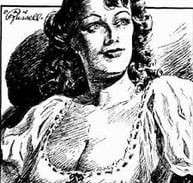

Vera Atkins
Vera Atkins: The Woman Who Sent Spies to War and Fought to Bring Them Home
In the shadowy world of wartime espionage, few figures loom larger—or more mysteriously—than Vera Atkins. Behind her refined manners, immaculate dress and sharp eyes lay a razor-sharp mind and an unrelenting determination to serve her country—and honor those who gave their lives doing the same.
From Bucharest to Britain: A Cosmopolitan Beginning
Born Vera Rosenberg in 1908 in Bucharest, Romania, she grew up in privilege. Her father, Max Rosenberg, was a wealthy German-Jewish businessman and her upbringing was cultured and international, mingling in elite diplomatic circles. Among her acquaintances was the German ambassador, Friedrich Werner von der Schulenburg—an outspoken opponent of the Nazis.
Vera studied in London, Paris and Lausanne but life changed drastically after her father’s bankruptcy in 1932 and his death a year later.
With antisemitism intensifying across Europe, Vera moved to London with her mother in 1937, adopting the surname "Atkins"—a maternal family name. Even in Britain, she was registered as an alien and, during the early years of World War II, faced the threat of internment.
Into the Shadows: The Special Operations Executive
Vera’s break came in 1941 when she joined the Special Operations Executive (SOE)—Britain’s secret wartime organization charged with sabotage, espionage and supporting resistance movements in Nazi-occupied Europe. Though she started as a secretary, it quickly became clear she was far more than that.
Working closely with Maurice Buckmaster, head of the SOE’s French Section (known as “F Section”), Vera became its indispensable nerve center. Fluent in both French and German, she took on responsibilities far beyond her title—selecting, vetting and preparing agents, particularly women, for high-risk missions in France.
These were not jobs for the faint of heart. Once behind enemy lines, these operatives faced near-certain danger. Vera oversaw every detail of their preparation: cover identities, forged documents, even the buttons sewn onto their jackets to ensure they matched French civilian clothing.
She debriefed returning agents, monitored field reports and personally escorted new recruits to airfields for their final departure. Some say she never missed a single send-off. Vera even had a ritual—shouting a colorful French expletive as the plane disappeared into the night.
A Woman in a Man’s World
Despite her brilliance, Vera wasn’t always welcomed. As a foreign-born Jewish woman in a male-dominated British intelligence service, she faced prejudice, suspicion and outright hostility. Her intellect, competence and the support of Buckmaster, helped her rise despite these obstacles.
In 1944, she finally became a British citizen and received a commission as a Flight Officer in the Women’s Auxiliary Air Force (WAAF)—official recognition for a job she had already been doing with distinction for years.
By war’s end, F Section had sent over 400 agents into occupied France, including 37 women. Tragically, many never returned.
The Relentless Search for the Missing
When the SOE disbanded in 1945, most agents and officers returned to civilian life. Not Vera. She couldn’t forget the missing—especially the twelve women she had personally sent on missions from which they never returned.
With no formal orders, she launched what she called her “private enterprise”: a determined mission to uncover the fate of every missing SOE agent.
Initially met with indifference by the British establishment, Vera’s tenacity won her support from MI6 and the British Army’s war crimes unit.
Her investigation took her across postwar Germany. She interrogated captured Nazis—including notorious concentration camp commandants like Rudolf Höss (Auschwitz) and Fritz Suhren (Ravensbrück). She traced the agents’ final movements, gathered witness accounts and examined archives with forensic precision.
In the end, she accounted for 117 of the 118 missing SOE agents. All but one were confirmed dead. Of the twelve women she had sent out, none had survived—some were shot, others gassed, one burned alive.
Recognition and Remembrance
Vera did not stop at uncovering the fates of the missing agents. She fought to ensure these brave people—especially the women—received the honour they deserved.
Many had been officially classified merely as civilians who died in custody. Vera worked tirelessly to have their deaths reclassified as “killed in action,” paving the way for posthumous awards.
Thanks to her efforts, Violette Szabo received the George Cross in 1946, and Noor Inayat Khan in 1949. Vera also helped establish memorials, including the Roll of Honour at Valençay, France, to commemorate the fallen SOE agents.
Legacy of a Quiet Warrior
For her own service, Vera Atkins was awarded the Croix de Guerre in 1948, made a Knight of the Legion of Honour in 1995, and appointed Commander of the Order of the British Empire (CBE) in 1997.
After the war she worked briefly for UNESCO, then retired to a quiet life in Winchelsea, East Sussex. She rarely spoke about her wartime work. Many friends only learned of her past through books or news articles. Some described her as guarded and difficult; others remembered her warmth, loyalty and quiet strength.
Vera Atkins died in 2000 at the age of 92. Her ashes were scattered in Zennor, Cornwall. She left behind not only a remarkable wartime legacy but also a deep moral example of courage, integrity and unyielding devotion to the truth, however dark it may be.
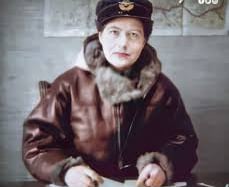

Catherine the Great
Catherine the Great: Enlightened Empress or Iron-Willed Autocrat?
Catherine the Great, born Sophie Friederike Auguste of Anhalt-Zerbst on May 2, 1729, was never meant to rule one of the world’s largest empires. She wasn’t even Russian. Yet by the time she died in 1796, she had transformed Russia into a European powerhouse, militarily, culturally and intellectually. Her reign lasted 34 years, the longest of any female ruler in Russian history and her legacy is as complex as it is fascinating.
A Prussian Princess Becomes Russian Royalty
Born into a minor German princely family in what is now Poland, Sophie was raised under the strict eye of a governess, largely ignored by her mother, who preferred her ill-fated younger brother.
As a young girl, Sophie was thoughtful and inquisitive, studying French, German, Russian and theology though she frequently challenged the religious dogma she was taught.
At age 15 her life changed forever. Czarina Elizabeth of Russia, daughter of Peter the Great, invited her to St. Petersburg as a potential bride for her nephew and heir, Grand Duke Peter. Sophie was ambitious and intelligent. She converted to Russian Orthodoxy (taking the name Catherine), learned the language and quickly won over the court.
In 1745, she married Peter. The marriage was far from a fairy tale. Peter was immature, cruel and more interested in toy soldiers than his wife. Their marriage was both personally and politically troubled and the question of the paternity of their son Paul, born in 1754, remains debated. Many believe Paul’s father was actually Catherine’s lover, Sergei Saltykov.
From Consort to Czarina
In January 1762, Peter III ascended the throne after Elizabeth’s death. His short reign was marked by unpopular decisions namely pulling Russia out of a war with Prussia, offending the Orthodox Church and alienating the military.
Within six months, Catherine seized the moment. Backed by the military and her allies, she orchestrated a coup. Peter was forced to abdicate and died under mysterious circumstances shortly thereafter. Whether Catherine played a direct role in his death remains unclear but suspicion hung over her court.
A Reign of Enlightenment and Expansion
Despite her controversial rise to power, Catherine governed with vigor and vision. A devotee of Enlightenment thinkers like Voltaire and Diderot, she tried to bring European ideals to the Russian Empire, often with mixed results.
Champion of Education
Catherine believed that an educated population was essential for a strong state. She introduced the first system of state-sponsored schools for boys and girls, independent of the Church, a radical move at the time.
Schools like the Smolny Institute for Noble Maidens catered to upper-class girls, while a national curriculum was introduced to standardize learning across the country. Though her reforms often favored the nobility, they laid a foundation for modern Russian education.
Patron of the Arts
Catherine was a prolific writer herself, penning essays, memoirs and even opera librettos. One of her works included “Memoirs of the Empress Catherine II” written by herself. She also penned the book Nakaz which was a political document intended to guide the legislature in drafting new code. It was her correspondence with Enlightenment figures that earned her the nickname “Catherine the Great.”
She collected thousands of artworks, forming the basis of the famed Hermitage Museum which now occupies the whole of the Winter Palace. Catherine promoted freedom of publication…at least early in her reign.
Conqueror and Strategist
Under Catherine Russia expanded dramatically. Her wars with the Ottoman Empire secured Crimea and extended Russian influence to the Black Sea.
She also played a major role in the partitions of Poland, absorbing large swaths of territory. These victories cemented Russia’s power, though not without controversy. Many Europeans saw the Polish partitions as cynical and aggressive, a betrayal of Enlightenment ideals.
Pioneer in Public Health
In 1768, Catherine became the first person in Russia to undergo variolation, an early smallpox vaccination. Her decision was both brave and strategic and it encouraged the public to follow suit, saving countless lives. She brought in British doctor Thomas Dimsdale to inoculate herself and her son, launching one of the first mass public health campaigns in history.
The Not-So-Great Side
Despite her enlightened image, Catherine’s reign wasn’t all progress. Many of her reforms either fell short or benefited only the elite.
Though she initially spoke against serfdom and proposed reforms, political pressure from the nobility forced her to retreat.
The 1785 Charter of the Nobility granted landowners more power than ever, worsening conditions for millions of peasants. Heavy taxation and forced military recruitment during her wars led to widespread suffering and unrest.
The French Revolution terrified Catherine. Once a champion of liberal ideas she clamped down on dissent, embraced censorship and distanced herself from Enlightenment values in her later years. Her once-daring reforms slowed and her court became increasingly autocratic.
Personal Scandals and Myths
Catherine’s personal life fueled enduring gossip. She was known for her many lovers, some much younger and bestowed titles, land and wealth upon them.
This led to unflattering nicknames like “Messalina (a promiscuous roman empress) of the Neva (a river which flows through St Petersburg).” Urban legends, including the absurd myth that she died in a scandalous sexual accident, have obscured her genuine accomplishments. In truth, she died quietly of a stroke in 1796.
Legacy of a Legend
Catherine the Great was a woman of contradictions: a foreigner who became the face of Russian greatness, an Enlightenment thinker who embraced autocracy, a reformer who upheld serfdom and a cultural patron whose personal life sparked scandal. Her rule brought progress and pain in equal measure.
What cannot be denied is her impact. She modernized Russia, expanded its territory, promoted education and science and made the empire a major player on the European stage. Even her failings, some tragic, others ironic, add to the complexity of a ruler who remains one of history’s most fascinating women.
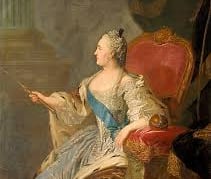

Angela Burdett-Coutts
Angela Burdett-Coutts - The millionairess who never stopped giving
Born in London in 1814, Angela Burdett-Coutts entered life surrounded by privilege but chose to spend her life surrounded by those in need. Her father, Sir Francis Burdett, was a radical politician and reformist. Her maternal grandfather was Thomas Coutts, founder of Coutts & Co., one of Britain’s most prestigious private banks.
Angela’s course changed forever in 1837, when she inherited the vast Coutts banking fortune after the death of her step-grandmother, Harriot Coutts. Just 23 years old, she became the richest woman in England, with a fortune equivalent to over £200 million today.
However, with great wealth came extraordinary purpose.
While many in her position might have retreated into aristocratic comfort, Angela turned her energy outward, committed not only to charity but to transformational social reform. Her life became a mission to improve the lives of the poor, the sick, the forgotten and the voiceless, both human and animal.
Friend to Reformers and Royalty
Angela was not content with simply writing cheques, she rolled up her sleeves and got involved. A friend of Charles Dickens, Florence Nightingale and the Duke of Wellington, she collaborated with some of the brightest minds of the Victorian era. Dickens referred to her as his “noble friend,” and together they co-founded Urania Cottage, a rehabilitation home for young women who had lived on the margins of society, sex workers, petty criminals and the destitute.
However, Urania Cottage was no grim institution. It aimed not to punish but to restore dignity and hope. Women were given shelter, education, training in domestic skills and the opportunity to start afresh, often in British colonies like Australia or Canada, where they could escape stigma and build new lives.
Champion of Education and Health
Angela's generosity was breathtaking in scope. She supported London’s ragged schools, which provided free education to impoverished children turned away by traditional institutions. These children often arrived barefoot and hungry but Angela believed that education could be a great equalizer.
She also financed feeding programs, medical assistance and vocational training. Her reach extended beyond London. During the Crimean War she funded nurses and medical supplies for wounded soldiers, echoing the efforts of her friend Florence Nightingale.
In British Columbia, she endowed churches and in South Africa, she supported missions. She wasn’t content with charity alone, she saw it as her duty to create lasting infrastructure. In London, she helped develop schools, churches and housing that endure to this day.
A Global Vision
Angela's interest in humanitarian efforts extended beyond the British Empire. In Jerusalem she tried to restore ancient water systems and funded early archaeological and geographical surveys. Although these water restoration projects didn’t bear fruit at the time, the surveys she funded became foundational resources for later scientific and historical work in the region.
She was also a staunch advocate for animal welfare, campaigning against cruelty long before it became a mainstream cause. In Edinburgh, she funded the famous Greyfriars Bobby drinking fountain, commemorating the loyal Skye Terrier who famously guarded his owner’s grave for years.
Even in her own bank, Angela practiced quiet revolution. She raised the salaries of employees, shortened their working hours and provided hot meals and access to a library, all unheard-of perks in 19th-century Britain. She was a pioneer of what we’d now call corporate social responsibility, treating workers as human beings rather than disposable resources.
A Scandalous Marriage
Despite her immense popularity and tireless work, Angela’s life was not without controversy. In 1881, at the age of 66, she shocked Victorian society by marrying William Ashmead-Bartlett, her American-born secretary who was just 29. The age difference, the social mismatch and his nationality, all sparked gossip and condemnation.
More than just a scandal, the marriage also violated a clause in her inheritance. She suffered financial penalties and legal challenges as a result. Yet by all accounts, the couple was happy and William supported her philanthropic work until her death, carrying on her charitable mission afterward.
Recognition and Legacy
Angela Burdett-Coutts died in 1906 at the age of 92. Her funeral was a national event. She was buried with full honors in Westminster Abbey, one of the few women in British history to receive such recognition. King Edward VII called her “the most remarkable woman in the kingdom - after my mother.”
By the end of her life, Angela had given away more than £3 million—the equivalent of hundreds of millions today but her real gift was not her money. It was her vision of charity as a tool for dignity, empowerment and hope.
She believed in individual potential, even in those the rest of society had written off. She demanded that philanthropy do more than feed mouths, it should open minds, change futures and reform systems.
To many, she remains the “Queen of the Poor,” but Angela Burdett-Coutts was far more than a benevolent aristocrat. She was a social engineer, an early feminist in action and one of the most effective philanthropists in British history.
Her legacy lives on, not only in the institutions she built and the lives she changed but in the very idea that wealth, when guided by compassion, can be a revolutionary force for good.
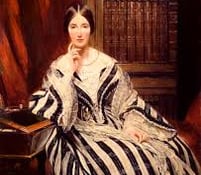

Lizzie Bordon
Lizzie Borden: The Axe, the Trial and the Woman Who Would Not Hang
Lizzie Andrew Borden was born on July 19 1860 in Fall River, Massachusetts, into a well-off but emotionally strained household. Her father, Andrew Borden, was a self-made man, hardworking, frugal and immensely wealthy by local standards. He was president of several banks, owned extensive property and had amassed an estate valued at what would be over $10 million today. Unfortunately, within the household, warmth and generosity were in short supply.
Lizzie’s biological mother died when she was very young. Two years later, her father remarried Abby Gray, a relationship that would grow cold over time, particularly for Lizzie and her elder sister, Emma. By the time of Abby's death neither daughter referred to her as “mother.” The house on Second Street, where the family lived, was not just physically tight and austere but emotionally suffocating. While Emma was soft-spoken and modest, Lizzie had a more vivid personality, often described by acquaintances as odd, self-important and difficult.
Lizzie lived a life that straddled the expectations of her time. Unmarried, childless and neither a housewife nor a career woman, she instead leaned heavily into civic respectability. She was active in her church, taught Sunday school and was involved in women’s societies. In public, she seemed the model of Christian femininity. In private, however, tensions simmered. There were whispered allegations of shoplifting, a deepening dislike of her stepmother and a growing sense of frustration over her dependency on her father’s strict financial control.
Everything changed on August 4, 1892.
That morning, Lizzie, now 32, was at home with Abby, their maid Bridget Sullivan and later, her father Andrew. Emma was away. At 11:00 a.m., Andrew was found murdered in the sitting room, his head crushed by multiple axe blows. Abby was discovered upstairs, killed earlier that morning, her skull similarly smashed. The brutality shocked the nation. Abby had received 19 whacks; Andrew 11.
Suspicion quickly turned inward. John Morse, a visiting relative, and Bridget, the maid, were ruled out based on their alibis. That left only Lizzie.
Her account was inconsistent. She claimed to have been in the barn during the murders but there was no trace of her activity there. She also offered varying statements about what she heard or saw. Crucially, she told police her stepmother had gone out after receiving a note—yet no such note was found. Her behavior struck investigators as odd. She was seen burning a dress after the murders, allegedly stained with paint. Witnesses later recalled she had tried to buy poison days before the killings.
Still, Lizzie didn’t fit the mold of a murderer. She was a wealthy, white Protestant woman from a “good” family. Victorian America couldn’t easily imagine such a woman hacking her parents to death with an axe. When she was finally arrested, a week after the crime, many in Fall River were stunned.
Her trial the following year became a media sensation, the O.J. Simpson case of its time. Lizzie, who never testified, sat demurely in court in black mourning attire. Her legal team included a former governor of Massachusetts and they played heavily on her image of a grieving daughter, a devout Christian and a woman too refined to commit such a horrific crime.
The prosecution pointed to her conflicting stories, her clear resentment of Abby and the implausibility of an intruder committing both murders undetected. They even introduced a burned dress and tried to establish a motive rooted in family property disputes but they had no murder weapon, no blood-soaked clothing and no witnesses.
Key pieces of evidence were excluded. Her inconsistent inquest testimony was ruled inadmissible on the grounds she hadn't had legal counsel. Her attempt to purchase poison was also struck from the record. In the end, the jury, twelve white, middle-class men, took just over an hour to find her not guilty. The courtroom erupted in cheers. Lizzie was free but not forgiven.
Though she inherited part of her father’s vast estate, she found herself shunned by society. She moved into a grand home called Maplecroft in Fall River’s elite neighborhood but few visited. Rumors clung to her like smoke. She hosted parties, traveled and befriended the actress Nance O’Neill, an unconventional friendship that sparked gossip and perhaps cost her even her sister’s loyalty. Emma moved out of Maplecroft in 1905 and the two sisters never reconciled.
In her later years, Lizzie, who began calling herself Lizbeth, lived in growing isolation. Accusations of shoplifting resurfaced. Once welcomed at church and civic functions, she was now a local pariah. Yet she never publicly addressed the case again.
She died in 1927, at age 66. Emma followed her nine days later. Both are buried in Fall River’s Oak Grove Cemetery, just steps from Andrew and Abby.
Lizzie Borden’s legacy is tangled. She was acquitted, but never exonerated. Her name lives on not through charity or public service but through a gruesome nursery rhyme that falsely immortalizes her as the woman who gave “forty whacks.”
However, the real Lizzie Borden, shrewd, frustrated and perhaps repressed by the limitations of her time, remains elusive. Was she an innocent scapegoat of gender bias and weak policing, or a cold-blooded killer shielded by her social class?
History never delivered a verdict. Perhaps that is what makes her story so enduring.
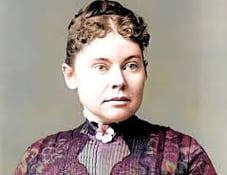

MARY SEACOLE
Mary Seacole: The Bold Healer of Many Lands
Mary Seacole’s story is one of courage, compassion and quiet defiance. Born in 1805 in Kingston, Jamaica, Mary was a woman of mixed heritage, Creole with Scottish blood, who would one day rival Florence Nightingale in the annals of wartime nursing. However, Mary’s path to recognition was steep, winding through colonial prejudice, personal loss and self-made triumph.
Her mother, known locally as “The Doctress,” ran a boarding house that catered to British officers. It doubled as a place of healing. Mary grew up watching her mother treat ailments using traditional Creole medicine, a blend of African, Caribbean and folk remedies.
From a young age, Mary was captivated. She absorbed her mother’s skills and observed the techniques of army surgeons who stayed at the boarding house. Long before she had formal recognition (which she never received), Mary was already tending to the sick, quietly building the foundations of her calling.
Her love for travel was sparked early, likely a gift from her Scottish father, a British Army lieutenant and her own adventurous spirit. As a young girl she made multiple trips to England, bringing Jamaican preserves to sell. She later ventured to Haiti, Cuba and the Bahamas, never content to sit still when there was more of the world to see and more people to help.
In 1836, Mary married Edwin Seacole and together they opened a store in Black River but happiness was short-lived. Edwin was frail and died just a few years later. That same year, Mary also lost her mother. She suffered further setbacks when her home was destroyed in the great Kingston fire of 1843. Yet, she rebuilt, physically and emotionally, and began to make a name for herself as a skillful and reliable nurse.
When a cholera outbreak swept through Jamaica in 1850, Mary’s skills were put to the test. She worked tirelessly, learning new techniques and applying traditional remedies with care and confidence. Three years later, she did the same during a yellow fever epidemic, tending to British troops and civilians alike. By then she had established herself as an indispensable caregiver, in a region plagued by disease.
Opportunity, or rather, a sense of duty soon pulled Mary across the seas once again. Her brother had set up a business in Panama, along a bustling transit route used by fortune-seekers heading to California during the Gold Rush. Mary joined him and was quickly horrified by what she found: filth, fever and racial prejudice, especially from white American travelers who sneered at her dark skin.
In the face of hostility, Mary remained undeterred. When cholera broke out again in the town of Cruces, she became the community’s go-to healer, treating anyone who needed help, regardless of their ability to pay. She even performed post-mortem examinations to better understand the disease, putting science ahead of squeamishness.
Though she briefly contracted cholera herself, she recovered and carried on. Later, in Gorgona, she built another hotel and again found herself butting up against racism, particularly from American women who made their disdain clear but Mary never let cruelty diminish her purpose. She helped where help was needed, always with dignity.
Then came the Crimean War.
When news of the conflict reached her, Mary felt an irresistible pull. She had spent her life tending to the sick and wounded in difficult conditions. Surely the British military would welcome her experience. She applied to the War Office in London to serve as a nurse, submitting references and testimonials but door after door slammed in her face. Florence Nightingale’s organization turned her away. Mary suspected the real reason was her race. “Was it possible,” she later wrote, “that American prejudice against colour had some root here?”
Rather than accept rejection, Mary did what she always did: forged her own path.
At her own expense, she traveled to the Crimea and partnered with a businessman, Thomas Day, to establish “The British Hotel” just outside Balaclava. Part canteen, part clinic and part comfort station, the hotel became a haven for soldiers. She sold food, medicines and warm clothing but she also gave out nursing care freely to those who needed it. To the men, she was not just a healer but “Mother Seacole.”
Unlike many caregivers of her time, Mary wasn’t content to stay behind the lines. She rode into battlefields under fire to aid the wounded, dressed wounds, carried water and cheered soldiers with her presence. Her fearless compassion became legendary among the troops and she was deeply mourned when she left.
However, the end of the war brought new hardship. Mary returned to England in 1856 bankrupt. She had invested everything in her mission and now faced poverty. Friends and admirers organized a fundraising gala to support her and the public came in droves. The following year, she published her memoir, Wonderful Adventures of Mrs. Seacole in Many Lands, a spirited and moving account of her life and travels. It was a commercial success and secured her a modest income.
Mary continued to treat patients, including royalty, and lived out the rest of her days in London. She died in 1881, still beloved by those who had known her firsthand. However, over time, history allowed her to fade, overshadowed by Florence Nightingale, whose work had the backing of officialdom and whose whiteness made her a more palatable heroine for Victorian society.
Still, Mary Seacole was never forgotten entirely. In Jamaica, she remained a cherished figure. In Britain, her legacy was rediscovered in the 20th century, thanks to Caribbean nurses and advocates who understood her importance, not only as a healer but as a pioneer who shattered racial and gender barriers. In 2016, more than a century after her death, a statue of Mary Seacole was finally erected outside St Thomas’s Hospital in London, the first statue in the UK to honour a named Black woman.
Mary Seacole was more than a nurse. She was a self-taught scientist, a savvy businesswoman, a battlefield angel and a defiant humanist who refused to let prejudice write the end of her story.
With her herbal remedies, her hands-on courage and her heart wide open to the suffering of others, she carved her name into history, not with medals or military rank but with compassion, skill and sheer force of will.
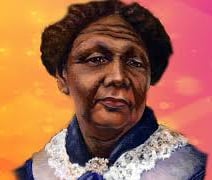

Catherine de Medici
Catherine de Medici: The Serpent Queen or the Mother Who Held France Together?
Catherine de Medici’s life reads like a Renaissance drama, riches, exile, royal ambition, betrayal, love and bloodshed. Born in Florence in 1519 to the powerful Medici banking family, she was left orphaned within weeks of her birth. Her early years were spent not in splendor but in convents, her status hanging by the fragile thread of her Medici name.
Yet, from these unsteady beginnings emerged a woman who would become one of the most powerful figures in French history, ruling behind the scenes through three sons and amid one of the most chaotic and violent eras the country had ever seen.
An Unlikely French Queen
Catherine was just 14 when her family married her off to Henri, Duke of Orléans, the second son of King Francis I of France. The match was arranged by her uncle, Pope Clement VII, and seemed politically promising, until the Pope died shortly after. Suddenly, Catherine was a foreign teenager in a French court that didn’t want her. She had no dowry, no powerful allies and a husband who had eyes only for his glamorous and much older mistress, Diane de Poitiers.
To make matters worse, Catherine struggled to produce an heir for the first ten years of their marriage. In a court obsessed with lineage and legacy, this was more than embarrassing, it was dangerous. Her fertility was questioned, her position threatened. Yet Catherine endured, reportedly remaining devoted to Henri despite his neglect. Eventually, with the help of medical intervention (focused more on Henri than her) the couple had ten children, seven of whom survived infancy. Motherhood became her power base.
A Queen Mother in a Kingdom on Fire
Catherine’s real political life began in 1559 when King Henri II died in a jousting accident, leaving the crown to their 15-year-old son Francis II. The sickly young king reigned only a year before dying suddenly, plunging France into instability. With the next heir, Charles IX, still a child, Catherine became queen regent, effectively ruling France in his name.
Although Salic Law barred women from formally taking the throne, Catherine wielded power with calculated determination. At a time when France was teetering on the brink of collapse, torn apart by violent religious wars between Catholics and Protestants (Huguenots), she stepped in, not with bluster but with astute diplomacy and survivalist pragmatism.
She negotiated peace treaties, introduced moderate reforms like the Edict of January and tried, often in vain, to balance two sides locked in ideological warfare. Some historians believe her political skill far outshone that of many kings. She wasn’t loved but she kept the monarchy afloat in stormy seas.
Patron of Power, Art and Image
Catherine wasn’t just a ruler, she was a cultural force. She brought with her the elegance and flair of the Italian Renaissance, introducing Italian cuisine, fashion and artistic trends to the French court. Her love of architecture and the arts led to extravagant court spectacles known as magnificences, lavish festivals that doubled as political theatre, to dazzle and distract the nobility.
She supported painters, sculptors and poets and was instrumental in the development of the ballet de cour, an early form of ballet that shaped French performance for generations.
However, even in the arts Catherine’s motives were never far from politics. Every painting, dance or palace was part of a bigger strategy, to reinforce the image of royal strength and divine authority during a time when the monarchy was under siege.
The Darker Chapters
Despite her accomplishments, Catherine's name is forever linked to one of the bloodiest events in French history, the St. Bartholomew’s Day Massacre of 1572. Thousands of Huguenots were killed in Paris and across France, in a wave of violence that followed the wedding of her Catholic daughter Margot to the Protestant Henry of Navarre.
Was Catherine the mastermind behind the slaughter, as Protestant propaganda later claimed? Or was she a monarch desperately trying to avert a rebellion in a dangerously polarized kingdom? The truth, as with much of Catherine’s life, is likely somewhere in between. She certainly approved a pre-emptive strike on key Huguenot leadersbu whether she foresaw or ordered the full-scale massacre remains debated.
This event and the murky rumors of poisonings, espionage and political manipulation, earned her the enduring nickname “The Serpent Queen.” Her enemies portrayed her as a schemer who manipulated her sons and poisoned her rivals. Some even accused her of creating the infamous “Flying Squadron,” a group of beautiful female spies used to seduce and gather information.
Whether truth or myth, these tales haunted her legacy.
A Complicated Mother
Catherine’s relationships with her children were equally controversial. She was often accused of manipulating her sons, playing favorites and undermining their authority when it suited her goals. Her daughter Marguerite de Valois (Margot) wrote scathingly of her mother, accusing her of physical abuse and emotional cruelty.
Perhaps Catherine saw no room for softness. She had survived being unwanted, underestimated and surrounded by enemies. She was a mother who knew that love alone couldn’t protect her children from assassination plots, civil war and betrayal. She gave them power and did what she believed was necessary to keep them alive.
Death and Legacy
Catherine de Medici died in 1589, just months before her last surviving son, Henry III, was assassinated. She died unpopular and isolated, her years of tireless effort dismissed by many as mere manipulation. Her Italian roots and gender had long been used against her, painted as sinister traits, in a France already suspicious of foreign women with too much influence.
Yet time has softened the judgment. In recent years, historians have begun to reassess her legacy. Far from a cartoon villain, Catherine is now seen by many as a brilliant strategist who held France together during one of its darkest periods. She made mistakes, some grave, but she also protected the monarchy, elevated the arts and brought a fiercely maternal tenacity to a job few women had ever been allowed to do.
Catherine de Medici may still be remembered as the “Serpent Queen,” but she was also a woman who fought tooth and nail to survive and to keep a fractured kingdom from falling apart.
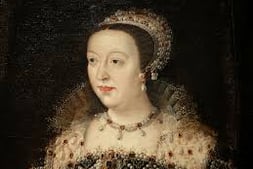

Lise Meitner
Lise Meitner: A Physicist Who Never Lost Her Humanity
Born Elise Meitner in Vienna in 1878, Lise Meitner grew up in a world where science was for men and women were told to watch from the sidelines but Meitner refused to sit quietly. A brilliant physicist and a woman of immense moral courage, she was a central figure in one of the most consequential scientific discoveries of the 20th century, nuclear fission. Yet, she was denied a Nobel Prize, overlooked by many in her own time and left to watch others take credit for her work.
Meitner was born into a cultured Jewish family—her father, one of Austria's first Jewish lawyers, believed strongly in education but opportunities for girls were limited. Lise’s early ambitions to study science seemed almost laughable in a society that didn’t allow girls to attend higher education. Still, she persisted. She took private lessons in physics and math and in 1901, when Austrian universities finally opened to women, she enrolled at the University of Vienna. By 1906, she had earned her PhD in physics, only the second woman to do so at that institution.
However, graduation didn’t guarantee a place in the scientific world. In Vienna she found herself shut out of research positions because of her gender. Determined she went to Berlin, the epicenter of atomic science, to attend lectures by Max Planck. Planck was famously skeptical of female scientists but was impressed enough by Meitner’s intellect to make her his assistant, marking a pivotal moment in her career.
It was in Berlin that she met chemist Otto Hahn, with whom she formed a groundbreaking collaboration that would last over 30 years. Their early work involved isolating radioactive isotopes and identifying new elements. In 1917 they discovered the element protactinium. Lise also discovered the Auger effect, detailing how electrons are ejected from atoms, work for which others, notably male scientists, would receive most of the credit.
Meitner’s achievements were recognized within scientific circles. In 1926, she became Germany’s first female full professor of physics at the University of Berlin. She was respected but never fully accepted within a male-dominated scientific establishment.
Everything changed in 1933 when Adolf Hitler rose to power. Meitner, though a Christian convert, was Jewish by birth. While others were quickly expelled from their posts, Meitner initially stayed on, protected by her Austrian citizenship. However, after the 1938 Anschluss, which saw Austria annexed into Nazi Germany, her safety evaporated overnight.
Fleeing Germany was no simple task. With the help of a network of friends and scientists, including Dutch physicist Dirk Coster and the widow of her former colleague Eva von Bahr, Meitner escaped into the Netherlands with just a suitcase, ten marks in her purse, and a diamond ring given to her for bribes if needed. From there, she made her way to Sweden, a land of safety but also of scientific isolation.
In Stockholm, Meitner was offered a desk, but little else. Her new lab had none of the tools or atmosphere she had left behind in Berlin. Her collaborator Otto Hahn remained in Germany, continuing their work in her absence. It was during this time, in late 1938, that Hahn and his assistant Fritz Strassmann made a startling discovery: when uranium was bombarded with neutrons, it broke apart into lighter elements, namely barium. Confused by the result, Hahn wrote to Meitner, asking for help interpreting the data.
Over a wintry holiday walk in Sweden with her nephew, physicist Otto Robert Frisch, Meitner realized what had happened. The uranium nucleus had split, a process that released enormous amounts of energy. She used Einstein’s famous equation, E=mc², to calculate the energy released: around 200 million electron volts. This was nuclear fission.
Frisch and Meitner quickly wrote a paper explaining the theory and published it in Nature in early 1939. It was the first scientific explanation of how a heavy atomic nucleus could split into twoan d it laid the groundwork for nuclear energy and, eventually, the atomic bomb.
Ironically, Meitner refused to be involved in the development of that bomb. When the United States launched the Manhattan Project, she declined all invitations to participate. “I will have nothing to do with a bomb!” she declared. A pacifist to her core, Meitner had served as a nurse during World War I and had seen firsthand what destruction looked like. When Hiroshima and Nagasaki were bombed, she was devastated.
Despite her pivotal contribution to nuclear science, it was Otto Hahn alone who received the Nobel Prize in Chemistry in 1944. Meitner’s name was absent, despite being co-discoverer of the very process he was honoured for. Many believe her gender, her exile,and her Jewish heritage all played a part in this glaring omission.
Though the Nobel committee failed her, others did not. She received the Enrico Fermi Award in 1966, alongside Hahn and Strassmann, and was named “Woman of the Year” in the U.S. in 1946. She continued to work and lecture well into her seventies, eventually settling in Cambridge, England, to be near her nephew. She died in 1968 at the age of 89.
On her tombstone, chosen by Frisch, are the simple words:
“Lise Meitner: A physicist who never lost her humanity.”
Today, Meitner is remembered not only as a brilliant scientist but also as a woman of principle who stood her ground in the face of injustice. In 1997 the chemical element Meitnerium (element 109) was named in her honour. She remains the only woman with a statue outside the Humboldt University in Berlin.
Her life was a study in contradictions—groundbreaking but uncelebrated, courageous but humble. Above all, she was a scientist whose legacy reminds us that brilliance need not come at the cost of compassion.
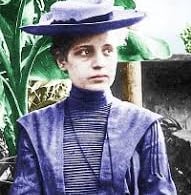

Cleopatra
Cleopatra: Queen, Strategist, Survivor
Cleopatra VII Thea Philopator was born in 69 BCE into Egypt’s ruling dynasty but not one that most Egyptians considered native. Her ancestors were Greek, descended from Ptolemy I, one of Alexander the Great’s generals who had claimed Egypt as his prize after the empire fractured. Still, Cleopatra was different. Unlike her Ptolemaic predecessors, she embraced Egyptian customs, adopted traditional dress and, perhaps most importantly, was the first of her line to speak the Egyptian language. In all, she was said to speak at least nine languages, including Greek, Latin, Aramaic and Persian.
She ascended the throne in 51 BCE, just 18 years old, sharing power, at least officially, with her ten-year-old brother, Ptolemy XIII. Their reign began amid political instability and mounting Roman interference. Cleopatra, strong-willed and ambitious, soon found herself in conflict with court advisers and her brother’s faction. Driven out of Alexandria, she was not a queen ready to concede.
Her return to power came through one of the most dramatic entrances in history. Julius Caesar, newly arrived in Egypt in pursuit of his rival Pompey, found himself entangled in the local dynastic feud. Cleopatra, understanding both the political and personal stakes, arranged a midnight meeting. According to legend, she had herself rolled up in a carpet, or a bed sack, and smuggled into Caesar’s quarters. She charmed the Roman general not just with beauty, but with wit, political acuity and confidence. Caesar helped her defeat Ptolemy XIII in the Alexandrian War and Cleopatra regained her throne, this time with another younger brother, Ptolemy XIV, as her nominal co-ruler.
She and Caesar became lovers. In 47 BCE, Cleopatra gave birth to a son, Ptolemy XV, widely believed to be Caesar’s child and known as Caesarion. While Caesar never formally acknowledged him, Cleopatra promoted her son as Rome’s and Egypt’s dynastic bridge. She visited Rome, lived in Caesar’s villa and was honored with a statue in the Forum—an unprecedented recognition for a foreign queen.
After Caesar's assassination in 44 BCE, Cleopatra returned swiftly to Egypt. Ptolemy XIV soon died, most historians believe by Cleopatra’s hand, and Caesarion was proclaimed co-ruler. With Caesar gone, Cleopatra again needed a Roman ally.
That ally came in the form of Mark Antony. When summoned to meet him in Tarsus in 41 BCE, Cleopatra arrived on a golden barge, dressed as the goddess Isis, incense burning and oars silken. It wasn’t merely vanity, it was theater with purpose. She knew the power of spectacle and Antony was captivated.
Their political alliance grew into a personal relationship and Cleopatra gave birth to three of his children: twins Cleopatra Selene and Alexander Helios and later, Ptolemy Philadelphus. Antony granted her swathes of territory once belonging to her ancestors, restoring some measure of the Ptolemaic kingdom’s past grandeur. Together, they presented themselves not merely as rulers, but as living gods of the East.
In 34 BCE, Antony and Cleopatra staged the “Donations of Alexandria,” a grand ceremony where they distributed lands among their children and named Caesarion “King of Kings.” Rome bristled. Octavian, Caesar’s heir, used the spectacle to stir fear and resentment, portraying Antony as bewitched by an exotic queen who threatened Rome’s virtue and sovereignty.
The conflict culminated in 31 BCE at the naval Battle of Actium. Antony and Cleopatra’s forces were decisively defeated by Octavian. A year later, as Octavian’s army advanced into Alexandria, Antony—believing Cleopatra already dead—fell on his own sword. He was taken to Cleopatra, still alive, and died in her arms.
Realizing she would be paraded through Rome in chains, Cleopatra chose to die on her own terms. On August 10 or 12, 30 BCE, at the age of 39, she ended her life. Legend has long favored the tale of her using an asp to deliver a fatal bite but the exact method remains uncertain. Some suggest she used a toxic ointment or poison.
She was buried beside Antony, as she had requested. Her son Caesarion was soon executed by Octavian, effectively ending the Ptolemaic dynasty. Egypt was absorbed into the Roman Empire and Cleopatra’s children with Antony were taken to Rome and raised by Octavia, Antony’s Roman wife.
Cleopatra has lived in the world’s imagination ever since, not merely for her romantic entanglements, but for the way she wielded intellect, charisma and strategy in a world where women, especially foreign ones, had little room to lead. She was a ruler, a mother and a woman who fought—sometimes ruthlessly—for survival and sovereignty in a turbulent world.
Little-Known Facets of Cleopatra’s Life:
Her famed beauty is disputed; ancient accounts often praised her intelligence and persuasive voice above appearance.
She created elaborate public displays to strengthen her political image, from barge entrances to festival societies with Antony.
She wrote medical and cosmetic texts, though some may be falsely attributed.
Coins show her with strong, masculine features—possibly a deliberate choice to convey power.
She may have had red hair, an unusual feature by Egyptian standards, possibly inherited from her Macedonian lineage.
She ruled for 22 years and was deeply involved in governance, famine response, trade and temple restoration.
She likely penned a one-word autograph on a papyrus document now considered a rare signature of a woman in ancient state affairs.
Roman historians often cast her as a seductress or sorceress, accusations born as much from politics and misogyny as from truth. Today modern historians now recognize Cleopatra as a shrewd, multilingual ruler who navigated the might of Rome with intelligence, vision and an unrelenting will to rule.
Cleopatra was the last pharaoh of Egypt but she was never merely a queen of the Nile. She was a force of history.


Empress Dowager Cixi
Empress Dowager Cixi: The Woman Behind the Curtain
Empress Dowager Cixi ruled China from behind a silk screen, literally and figuratively, for almost half a century. She never wore a crown or sat on the Dragon Throne, yet she controlled the vast Qing Empire during one of the most turbulent eras in its history.
To some, she was a ruthless schemer who resisted progress. To others, she was a skilled survivor and reformer, holding a crumbling dynasty together with intellect, grit and an extraordinary instinct for power.
Cixi was born in 1835 as Yehenara, into a Manchu family tied to the military elite. Though not royalty, her lineage qualified her to enter the imperial palace. At age 16, she joined Emperor Xianfeng’s harem as a low-ranking concubine, just one among many but her fate changed in 1856 when she gave birth to the emperor’s only son, Zaichun. This earned her the title of Noble Consort and a new name: Cixi, “Empress of the Western Palace.”
When Emperor Xianfeng died in 1861, their five-year-old son became the Tongzhi Emperor. Cixi, now Empress Dowager, wasn't content to simply serve as ceremonial mother to the child-emperor. She seized political control in a palace coup, removing the regents appointed by her late husband and ruling jointly with the senior Empress Dowager Ci’an. It was the beginning of a unique arrangement: two women ruling the world’s largest empire from behind a curtain, while male ministers addressed them on bended knee.
Cixi’s first regency came during a time of chaos. China had just been defeated in the Second Opium War and was still battling the devastating Taiping Rebellion. Cixi supported the Tongzhi Restoration, a set of moderate reforms aimed at stabilizing the nation. She promoted the modernization of China’s military, industry and diplomacy, most notably by creating a foreign affairs office and allowing Han Chinese generals to lead imperial armies. These moves helped preserve Qing rule for decades longer than many had expected.
When her son died in 1875 without an heir, Cixi once again shaped history. Ignoring protocol, she named her three-year-old nephew, Zaitian, as the next emperor, known as the Guangxu Emperor. She retained her title as Empress Dowager and took up the regency once again. Her co-regent, Empress Dowager Ci’an, died suddenly in 1881. Though whispers of poison swirled around the Forbidden City, there was no proof. From that point on, Cixi ruled alone.
She had a complicated relationship with modernity. Early in her reign, she resisted some Western innovations, she reportedly wouldn’t ride in a train or car for fear of losing dignity. However, she founded schools, permitted foreign language education and supported new industries. She even allowed the first photographs of herself to circulate, carefully staged images showing her regal and serene in elaborate Manchu robes, designed to shape how the world saw China’s imperial woman of power.
The greatest challenge to her rule came not from foreign powers but from her own court. In 1898, the Guangxu Emperor, now an adult and reform-minded, launched the Hundred Days’ Reform, a bold, sweeping attempt to modernize China's education, economy and government.
Alarmed by the pace of change and fearing loss of control, Cixi staged another coup. She placed the emperor under house arrest and halted the reforms. Critics saw this as a betrayal of progress, though others argue she was trying to avoid national collapse.
Her handling of the Boxer Rebellion in 1900 is another chapter clouded in controversy. Initially supporting the anti-foreign Boxers and declaring war on several Western powers, she was forced to flee Beijing when allied troops invaded. Upon her return two years later, she had changed course. Cixi began what became known as the New Policies, reforms that touched nearly every aspect of Chinese life: legal codes, military training, women's education and even abolishing foot binding.
In the final years of her life, Cixi seemed almost transformed. She embraced diplomacy, invited foreign envoys’ wives to court and commissioned her own portrait by an American painter. She appeared to understand that the Qing dynasty could not survive without change.
She died on November 15, 1908, just one day after the death of the Guangxu Emperor. Forensic studies in 2008 suggested that he died of arsenic poisoning, fueling long-standing speculation that Cixi had him silenced to secure her legacy. Before her death, she named a toddler, Puyi, as her successor. He would be the last emperor of China.
Cixi was buried in great splendor in the Eastern Qing Tombs, though her grave was later looted during political upheaval. Her rule ended just a few years before the Qing dynasty collapsed in 1912, bringing 2,000 years of imperial rule in China to a close.
Whether viewed as a conservative empress or a reform-minded pragmatist, there is no question: she steered China through one of its most difficult eras, not from a throne, but from behind a silk curtain.
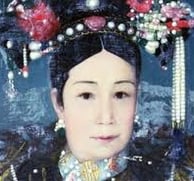

Irma Grese
Irma Grese: The Beautiful Beast of Belsen
Irma Grese is remembered as one of the most notorious female war criminals of the Nazi era. She was not only among the few women to serve as a concentration camp guard, but also one of the youngest to be tried and executed for war crimes. At just twenty-two years old, she was hanged by the British for her role in the atrocities at Auschwitz and Bergen-Belsen, earning infamy as the “Beautiful Beast” and “Hyena of Auschwitz.”
Early Life and Family
Irma Ilse Ida Grese was born on October 7, 1923, in the rural village of Wrechen, in northern Germany. She was one of five children born into a modest, working-class family. Her father was a strict and devout man who later joined the Nazi Party and became a local leader. Her mother died tragically when Irma was just twelve years old, having taken her own life after discovering her husband’s infidelity. Irma was the one who found her mother’s body, an event that may have deeply affected her emotionally.
Despite her father’s objections, Irma joined the League of German Girls (Bund Deutscher Mädel) in her teens. The group was part of the Hitler Youth and like many young Germans at the time, Irma was drawn in by nationalistic propaganda and the promise of belonging and purpose.
A Path Toward Darkness
Irma left school around the age of fourteen or fifteen and took on a series of short-term jobs. She worked briefly on a farm, in a shop and then as a nurse’s assistant at a sanatorium. While she had expressed interest in becoming a nurse, her career took a grim turn when she was assigned to work at Ravensbrück, a concentration camp for women. Though she later claimed this posting was not her choice, records and testimony show she returned voluntarily for training.
In 1942, at the age of eighteen, Irma began training to become a concentration camp guard. She adapted quickly to the brutal culture of the camps and it was here, under the guidance of more senior female guards, that her cruelty began to take form. Within weeks, she was reported to have lost any sense of compassion or hesitation. Her training emphasized obedience and discipline and she soon found she enjoyed the power and control her new role gave her.
Rise Through the SS Ranks
Grese began working at Ravensbrück but was soon transferred to Auschwitz-Birkenau in 1943. There, she quickly rose through the ranks to become a Senior Supervisor (Oberaufseherin), one of the highest positions available to women in the SS. By 1944, she was overseeing approximately 30,000 female prisoners, most of them Jewish women from Poland and Hungary.
Her behavior at Auschwitz earned her a terrifying reputation. Survivors described her as sadistic and unrelentingly cruel. She wore heavy leather boots, carried a whip and a pistol and was known to beat prisoners without provocation. She often selected prisoners for punishment or execution, including for the gas chambers, although she later denied being directly involved in those decisions.
Her appearance was striking—tall, blonde, and blue-eyed—which only added to the chilling contrast between her looks and her actions. She became known by various nicknames among prisoners, including “The Blonde Angel of Death” and “The Bitch of Belsen.”
Belsen and Capture
In early 1945, as the war was drawing to a close and the Allies advanced, Grese was transferred to Bergen-Belsen concentration camp. Conditions there were horrific. The camp was overcrowded, disease was rampant and thousands were dying of starvation and neglect.
Grese held a senior position at Belsen and continued to rule with fear. She forced prisoners to perform exhausting physical drills, known as “sport,” and was accused of using her dog to attack inmates. Some accounts claimed she watched pregnant women suffer without offering help and showed no concern for the dying.
When British forces liberated Bergen-Belsen on April 15, 1945, they found piles of unburied bodies and thousands of emaciated survivors. Irma Grese did not flee. She remained at the camp and was arrested shortly after by the British. Witnesses say she was defiant at first, but her arrogance began to crack during interrogation.
Trial and Execution
Irma Grese was put on trial during the first of the Belsen Trials, held in Lüneburg, Germany, in late 1945. She was charged with war crimes, including the mistreatment and murder of prisoners at both Auschwitz and Belsen. Survivors gave harrowing testimony of her actions, describing brutal beatings, arbitrary shootings and selections for death.
Throughout the trial, Grese appeared largely emotionless. She denied many of the charges but admitted to carrying a whip and using it. Her cold demeanor stood in stark contrast to the pain described by those who had suffered under her authority. She offered little remorse, though she did say at one point that if Himmler were alive, “he would be responsible for everything.”
The court found her guilty on all counts. On December 13, 1945, she was executed by hanging at Hameln Prison, carried out by famed British executioner Albert Pierrepoint. As she stood on the gallows, she reportedly smiled and said “Schnell!”—the German word for “quick.”
Legacy of Cruelty
Irma Grese’s story remains one of the most disturbing examples of how ordinary individuals can become agents of cruelty under the influence of authoritarian ideology. Her youth, beauty and horrific crimes have continued to captivate and horrify historians, survivors and the public alike.
Though many of the details surrounding her personal life and sexual behavior remain clouded in rumor and controversy, what is undeniable is the immense suffering she inflicted.
She is remembered not only as a war criminal but as a warning of how ideology, power and inhumanity can corrupt the young and impressionable, especially when they are given authority over the powerless.
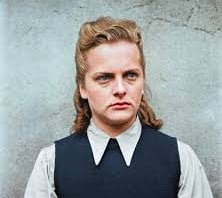

Ching Shih
Ching Shih: Pirate Queen of the South China Sea
Ching Shih, also known as Zheng Yi Sao, was one of the most powerful and successful pirates in history— either man or woman! She rose from humble beginnings to command the largest pirate fleet the world had ever seen, ruling the South China Sea with discipline, cunning and force. Her life was marked not just by plunder but by strategy and survival in a male-dominated world.
Early Life and Marriage
Born around 1775 in Guangdong Province, China, Ching Shih began life as Shi Yang. She may have belonged to the Tanka people, a marginalized seafaring ethnic group. Her early years remain obscure but records suggest she worked aboard a floating brothel. Her beauty, intelligence and composure reportedly made her popular among wealthy clients and influential figures.
At the age of 26, she married Zheng Yi, a powerful pirate captain from a long line of seafarers. Their marriage in 1801 was no ordinary union. It’s said that Ching Shih negotiated equal partnership in the pirate enterprise as a condition of the marriage. Together, the couple solidified control over a vast pirate coalition known as the Red Flag Fleet.
Rise to Power
Zheng Yi was a shrewd leader who had already united several rival pirate factions under a single confederation. With Ching Shih by his side, this union became more organized and effective. She played a key role in diplomacy, negotiation and administration, strengthening the Red Flag Fleet’s power and influence.
By 1805, the confederation had grown into six fleets, each identified by a flag color, red, black, blue, white, yellow and purple. The Red Flag Fleet, led by Zheng Yi and Ching Shih, was the largest. At its peak, it commanded around 400 ships and possibly as many as 60,000 pirates. The couple had two sons during their marriage, born in 1803 and 1807.
Zheng Yi died unexpectedly in a storm in 1807. With her husband gone, Ching Shih made a swift and brilliant move to retain power. She aligned herself with Cheung Po Tsai, Zheng Yi’s adopted son and former lover. She and Cheung soon became lovers themselves, and later married, which cemented her control over the fleet. Cheung Po Tsai obeyed her directives and consulted her on all major decisions.
The Pirate Empire
Under Ching Shih’s command, the Red Flag Fleet expanded dramatically. Some estimates say she led over 1,800 ships and 80,000 pirates. The fleet dominated the South China Sea, extorting coastal towns, disrupting trade routes and controlling access to key ports between Macau and Canton.
To govern such a vast and unruly force, Ching Shih implemented a strict pirate code. Her rules were harsh but effective. Disobedience, desertion or theft from villagers, or the pirate treasury, meant certain execution. Loot was distributed according to set percentages, with clear registration requirements.
Interestingly, the code also protected female captives. Rape was punishable by death. Even consensual sex with a captive could result in execution. Pirates who took captives as wives were expected to remain faithful to them. This structure enforced discipline and loyalty, strengthening her grip on the pirate confederation.
Defiance and Defeat
Ching Shih’s fleet clashed repeatedly with the Qing dynasty’s navy and also battled the Portuguese and British. For years, she remained undefeated. In 1808 and 1809, her forces routed major Chinese fleets and terrorized the coastline.
However, in late 1809, things began to change. A Portuguese flotilla under José Pinto Alcoforado launched a campaign against the Red Flag Fleet in the Battle of the Tiger’s Mouth. With better firepower, including explosive cannons and rifles, the Portuguese sank hundreds of pirate ships.
A key battle in January 1810 forced the pirate fleet into the shallow Hiang San River, where they were blockaded for two weeks.
Facing starvation and no escape, Cheung Po Tsai contacted the Portuguese to begin surrender negotiations. Miguel José de Arriaga, the chief magistrate of Macau, served as a respected mediator. Realizing that further resistance was futile, Ching Shih made the bold decision to negotiate directly with Chinese officials.
Surrender and Survival
On April 17, 1810, Ching Shih led a formal delegation, including women and children, to meet with the Viceroy of Canton, Bai Ling. Just three days later, she and Cheung Po Tsai officially surrendered. They gave up 17,000 pirates, over 200 ships and thousands of weapons. Remarkably, they did so without facing punishment. Excellent negotiators!
As part of the deal, the pirates received full pardons. Cheung Po Tsai was given a naval commission in the Qing Imperial Navy and allowed to keep a small fleet of 20–30 ships. Ching Shih was granted permission to marry Cheung Po Tsai legally and retire from piracy altogether. The Portuguese, impressed by her leadership and diplomatic skill, demanded nothing in return.
Later Years and Legacy
After leaving piracy, Ching Shih transitioned to civilian life with surprising ease. She opened and ran a successful gambling house in Macau or Canton and remained a respected figure. Cheung Po Tsai continued to serve in the Chinese navy, rising to the rank of colonel and helping fight other pirates. The couple had another son together in 1813, and possibly a daughter as well.
Cheung Po Tsai died in 1822 at the age of 39. Ching Shih lived on for another two decades, dying peacefully in 1844 at the age of 69. Her descendants are said to still live in Macau today.
Ching Shih’s story remains extraordinary. She rose from a marginalized background to become one of the most powerful figures in maritime history.
Unlike most pirates, she was never captured, punished or betrayed. Instead she negotiated her own terms and lived out her days in wealth and security. Her legacy has inspired novels, podcasts, video games and films, including the character of Mistress Ching in Pirates of the Caribbean.
In a world that rarely allowed women power, Ching Shih commanded thousands, and she never lost.
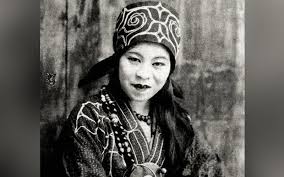

Valeria Messalina
Valeria Messalina - The Empress Who Went Down in Scandalous Flames
Valeria Messalina didn’t just make waves in ancient Rome—she made a tsunami. Wife to Emperor Claudius, mother to his heir and the subject of every juicy gossip scroll in the empire, Messalina has gone down in history as one of the most outrageous women to ever wear a Roman crown (or, in her case, possibly a wedding veil and, more than once) but was she really as wild as they say, or was she just a powerful woman with really bad press?
Let’s dig into the scandal, the spin and the truth that might be hiding somewhere in between.
From Imperial Bloodline to Imperial Bed
Born around 17 or 20 CE, Valeria Messalina had blue blood running through her veins, Roman elite on both sides. Her father was Marcus Valerius Messala Barbatus, her mother Domitia Lepida and her family tree included the great Emperor Augustus himself. It’s no surprise she was married off to her distant relative Claudius, a much older man, who at that point was more a scholarly uncle than future emperor.
However, fate interceded In 41 CE after Caligula was murdered in a palace plot, Claudius was literally pulled out from behind a curtain and declared emperor by the Praetorian Guard. Messalina, probably still in her teens, suddenly found herself First Lady of the Roman Empire.
She and Claudius had two children: Claudia Octavia, who would go on to marry Nero (yes, that Nero) and Britannicus, who was supposed to inherit the empire.
Empress with a Side of Scandal
Here’s where things get spicy and, let’s be honest, a little unbelievable.
According to ancient historians like Tacitus, Suetonius and Dio Cassius (none of whom were particularly fond of women in power) Messalina wasn’t just politically active, she was a one-woman wrecking ball. They accused her of sleeping her way across the empire, manipulating trials, executing rivals and basically treating the imperial palace like her personal playground.
The stories range from the shocking to the downright absurd. One satirist claimed she snuck out at night to moonlight as a prostitute, competing with the professionals in sheer stamina. A competition she allegedly won!
Whether or not these tales were true, they served their purpose, to paint Messalina as a dangerous blend of beauty, ambition and absolute chaos.
However, let’s pause for a reality check. Most of these accounts were written decades, if not centuries, after her death. They were laced with politics, moralizing and a hefty dash of misogyny. Ancient Rome wasn’t exactly known for fair treatment of powerful women.
The Wedding That Wasn’t Supposed to Happen
By 47 CE, Messalina had taken up with Gaius Silius, considered the most handsome man in Rome. Apparently, she fell for him hard and fast and ordered him to divorce his wife so they could be together. Silius didn’t exactly resist. Being the emperor’s wife’s lover came with some pretty good perks.
Then, while Claudius was out of town (always when the drama happens), Messalina and Silius allegedly got married. Some historians claim it was an actual legal wedding; others think it was more like a boozy costume party gone too far. Either way, it looked very bad.
Claudius’s trusted freedman, Narcissus, raced to inform the emperor that his wife had apparently remarried in his absence. Was it a plot to overthrow him? A bid to get her son Britannicus on the throne with a new dad in charge?
Whatever the motive, Claudius came back furious—and frightened. Narcissus made sure Messalina didn’t get a chance to explain herself (smart, considering she was famous for talking Claudius into anything). Executions were ordered and Silius was among the first to go.
The End in the Garden
Messalina fled to the Gardens of Lucullus—ironically, part of an estate she’d snatched from a previous victim. Her mother, Domitia Lepida, was with her and reportedly encouraged her to take her own life to die with dignity.
Messalina, still only in her twenties, couldn’t do it, however, a soldier finished the job. Claudius, we’re told, reacted with all the emotion of a man who didn’t seem to care too much. The Senate declared a damnatio memoriae—an official erasure from history. Statues were smashed of Messalina, coins were melted and her name was scratched off everything it had once adorned.
A little over a year later, Claudius did marry Agrippina the Younger. Her son Nero would eventually inherit the throne instead of Messalina’s son Britannicus.
Was Messalina Really That Bad?
Here's the big question, was Messalina truly the femme fatale history makes her out to be?
Modern historians are skeptical. Much of what we "know" comes from sources that loved a good scandal and had axes to grind. Plus, Roman writers had a habit of turning powerful women into cautionary tales. Think: “Don’t let your wife have opinions—or she’ll ruin the empire.”
There’s also the possibility that Messalina’s bold behavior, assuming it really happened, was driven by politics, not just passion. She may have been trying to protect her son’s inheritance or maybe even feared being replaced by someone like Agrippina. Some have even suggested the "marriage" to Silius was part of a desperate plan for survival, not an erotic misadventure.
Legacy of a Legend
In the end, Messalina’s legacy is a tangled one. Was she an empress out of control or a woman caught in the crosshairs of palace politics? Was she a scheming seductress or a scapegoat? The truth is likely somewhere in between.
What we do know is this: Valeria Messalina was no ordinary Roman woman. She lived fast, died young and left behind a reputation that would echo through history. Whether villain or victim, she remains one of the most fascinating, and infamous, women of ancient Rome.
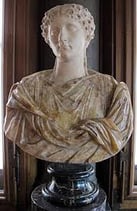

Marie Curie
Marie Curie: The Glowing Genius Who Lit Up Science
Marie Curie, born Maria Skłodowska in Warsaw in 1867, wasn’t just brilliant, she was radioactive. Literally. Her life glows (pun intended) with firsts, fights and phenomenal discoveries. She was the first woman to win a Nobel Prize, the first person to win two and the only person ever to win in two different sciences, physics and chemistry. Move over Einstein, there's a new element in town, actually two, polonium and radium, both thanks to her.
However, before she was the Madame Curie of global fame, she was just Maria—a determined Polish girl with an appetite for science and a long road ahead.
From Governess to the Sorbonne
Growing up in Russian-controlled Poland, girls weren’t exactly encouraged to dream big, especially not about atoms but Maria was relentless. She worked as a governess to fund her sister Bronya’s medical studies in Paris, with a plan that, in the future, Bronya would return the favor which she did.
In 1891, Maria moved to Paris, became "Marie," and threw herself into physics and maths at the Sorbonne. She barely spoke French, lived in a freezing attic and often fainted from hunger. She managed to pass all her exams with flying colors and soon after, met a soft-spoken physicist named Pierre Curie.
They married in 1895—a scientific match made in heaven.
A Team That Changed the World
Inspired by Henri Becquerel’s work on uranium, Marie began experimenting with radioactive elements. Using equipment her husband and his brother had developed, she discovered that thorium emitted mysterious rays, just like uranium. Marie recognised the radiation came from the atoms themselves, not their chemical combinations.
This led her to coin the term “radioactivity.” She had just cracked open the atom, without even realizing it yet.
Soon, she and Pierre were examining pitchblende, a mineral more radioactive than uranium alone. Something else had to be in it. With sweat, spreadsheets and tons of pitchblende they isolated polonium, named for her beloved Poland and radium, meaning “ray.” Voilà, two new elements and a brand-new field of science.
A Miserable Shed and Glowing Bottles
The Curie lab wasn’t exactly glamorous. It was a drafty old shed with no heat and no ventilation. The experiments were laborious, involving thousands of chemical separations. Marie once described the lab as being boiling in summer, freezing in winter, and yet, “the best and happiest years of our lives.”
They often worked by the light of softly glowing bottles of radium, radioactive fairy lights!
They refused to patent their work, believing science should be shared freely. (Can you imagine a modern lab saying that?) Instead, they offered their techniques to industry while continuing their research.
Nobel x2 and Life’s Highs and Lows
In 1903, Marie, Pierre and Becquerel shared the Nobel Prize in Physics. Pierre insisted Marie be recognized alongside him. Marie defended her PhD that same year, with a thesis hailed as one of the greatest ever.
Tragically, in 1906, Pierre was killed in a street accident. Devastated but undeterred, Marie took over his post at the Sorbonne, becoming the university's first female professor.
In 1911, she won her second Nobel, this time in Chemistry, for isolating radium and polonium. She was now the first (and still only) person to win in two scientific disciplines.
However, the glow came with shadows. Around the time of her second Nobel, Marie faced a barrage of scandals: she lost an election to the French Academy of Sciences, was attacked in the press for her foreign birth and gender and was publicly shamed for an affair with physicist Paul Langevin. The newspapers printed more about her love life than her lab notes.
Still, she soldiered on, just like always.
Wartime Heroine
When World War I erupted, Marie packed up her science and took it to the front lines. She developed mobile X-ray units, called "Petites Curies", that were used to examine wounded soldiers. She trained nurses (including her own daughter Irène), drove the vans herself and turned battlefield medicine into something far more precise. She even offered to melt down her Nobel medals to fund the war effort. (Thankfully, the French government said no.)
The Radium Queen
After the war, Marie helped establish two Radium Institutes, one in Paris and one in Warsaw, training future generations of scientists and doctors. She continued to raise funds, including a celebrated U.S. tour organized by journalist Missy Maloney, during which President Harding presented her with a gram of radium. Yes, Marie Curie got a gram of radium from the White House!
Her work with radioactive elements changed not only science but medicine. Radium was used in cancer treatments and even sparked the birth of nuclear physics but the health risks weren't known yet. Marie, Pierre and many early workers were unknowingly exposed to dangerous levels of radiation. Her lab notebooks are still radioactive today and stored in lead-lined boxes.
Legacy That Still Shines
Marie Curie died in 1934 from aplastic anemia, likely caused by years of radiation exposure but her legacy, absolutely luminous!
She was the first woman laid to rest in the Pantheon in Paris on her own merit, next to Pierre. Her work paved the way for cancer treatments, atomic theory and generations of women in STEM. Institutions, charities and hospitals bearing her name continue to serve people around the world.
From a freezing attic in Paris to two Nobel Prizes and a place in scientific immortality, Marie Curie proved that brains, grit and a little glow can change the world.
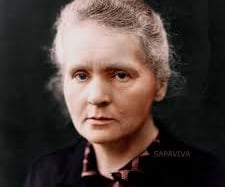

Joan of Arc
Joan of Arc: The Teenager Who Heard Voices and Fought for France
Joan of Arc wasn't supposed to be a national heroine. She was supposed to be sewing or tending goats in a sleepy French village, instead she ended up leading armies, lifting sieges, defying kings and, rather unfairly, getting burned at the stake. All by the age of 19.
Born around 1412 in the village of Domrémy, Joan was the daughter of humble tenant farmers. She didn’t learn to read or write but was taught deep piety and household skills by her mother. By age 13, she claimed she began hearing voices, no small thing in medieval France. These voices belonged to saints whom she said were Michael, Catherine and Margaret and they had a very specific to-do list for her, save France from the English, crown the rightful king and wear armor while you're at it!
At the time, France was in the thick of the Hundred Years' War and things were not going well for them. English forces occupied vast parts of the country and the French crown, worn only metaphorically by the Dauphin Charles VII, was shaky at best.
A Girl on a Mission
In 1428, at just 17, Joan set off to convince military officials that God wanted her to lead France to victory. Naturally, they thought she was mad but she was persistent—so persistent that Robert de Baudricourt, the commander at Vaucouleurs, finally agreed to send her to the Dauphin after she correctly predicted a French defeat at Orléans.
Joan chopped her hair, put on men's clothing (for safety and practicality, she'd later say) and made the dangerous trip through enemy territory to the royal court at Chinon. When she arrived, Charles tried to trick her by hiding among his courtiers. Joan reportedly walked in and picked him out immediately and just like that, she had an audience with the would-be king.
Charles, ever cautious, sent her off to be examined by a panel of theologians in Poitiers. Their verdict? She was pious, modest, and, most importantly, a virgin—important because of a circulating prophecy that a virgin would save France. They found no heresy, just unshakeable confidence.
The Maid of Orléans
With royal approval, a suit of armor and a white banner embroidered with Jesus and lilies, Joan marched to Orléans in April 1429. The city had been under siege by the English for months. Morale was low. Then Joan arrived, full of faith and fire and, within nine days, the English were gone. Just like that, the tide began to turn.
Though she was initially meant to be a mascot of sorts, Joan proved herself on the battlefield. She rallied troops, took arrows and came back for more. The victory at Orléans was seen as the divine sign she had promised.
From there she pushed for the real goal, the coronation of Charles VII and to do that, she needed to clear a path to Reims, the traditional site of French coronations. Along the way, she led campaigns through towns and strongholds, culminating in the Battle of Patay an outright French victory that left English forces in disarray.
In July 1429, Charles was crowned King Charles VII, with Joan standing proudly by his side. A peasant girl had taken him to the throne.
A Heroine Out of Favor
You’d think she’d get a palace or a holiday in her honor. Instead Joan’s fortunes quickly turned. Once Charles had his crown, he seemed less keen on Joan’s aggressive style. She urged more campaigns, like liberating Paris but the royal court leaned toward peace talks. Her influence faded.
She was even injured again during a failed attack on Paris. Still, she fought on. She was eventually ennobled but political support had cooled. When she joined an expedition to lift the siege of Compiègne in 1430, it was likely without royal permission.
During a skirmish outside the city, Joan was captured by the Burgundians, French allies of the English, and sold to the English for 10,000 francs. A bargain, considering what they did next.
Trial and Tragedy
Joan was taken to Rouen and tried for heresy in a court handpicked by the English. It wasn’t a fair trial as Joan had no lawyer, biased judges and very creative record-keeping. Her wearing of men’s clothing became a key charge and the court tried everything to trap her in her words.
However, Joan was astonishingly clever. When asked if she believed she was in God’s grace, a theological landmine, she famously replied: “If I am, may God keep me there; if I am not, may God put me there.” Clever words for a teenager.
Eventually, under threat of execution and likely immense pressure, she signed a confession and agreed to wear women's clothes, however, when her captors failed to uphold their promises, she resumed her male attire. This was deemed a “relapse into heresy” a capital offense.
On May 30, 1431 Joan of Arc was burned at the stake in Rouen’s marketplace. She was 19. Witnesses say she asked for a cross and died holding one, calling out Jesus’s name as the flames rose. Her ashes were thrown into the Seine.
Sainthood and Symbolism
Joan’s death didn’t stop France’s momentum. The Hundred Years’ War ended in French victory in 1453 but the question lingered, had the king been crowned thanks to a heretic?
To clear things up, Charles VII eventually launched a posthumous trial. In 1456, Joan’s original trial was declared unjust and her name was officially cleared.
More than 400 years later, in 1920, Joan of Arc was canonized as a saint. She’s now the patron saint of France and her legacy lives on in statues, paintings, literature and political speeches. She remains a symbol of faith, courage, and unshakable conviction—and proof that you’re never too young, too poor or too female to change the course of history.
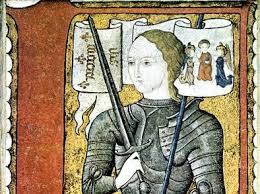

Lucretia Borga
Lucrezia Borgia: Poison, Power and Possibly... Misunderstood?
When you hear the name Lucrezia Borgia you might picture a scandalous Renaissance femme fatale, equal parts beauty and danger, dipping rings into poison and plotting shady dinner parties.
For centuries, Lucrezia has been cast as the poster girl for family dysfunction, political scheming and the occasional whispered accusation of incest. However, as with many infamous women of history, the truth is a whole lot more convoluted, and far more interesting.
Lucrezia was born in 1480, the illegitimate daughter of a Spanish cardinal named Rodrigo Borgia (who later upgraded to Pope Alexander VI) and his longtime mistress, Vannozza dei Cattanei. Thanks to power-hungry alliances, assassinations and a knack for offending just about everyone, the Borgias earned the title of Italy’s most notorious family and poor Lucrezia was spinning in the middle of it all.
Bad Reputation, Questionable Evidence
Lucrezia’s name has been dragged through five centuries of mud. People accused her of incest with her father and brother Cesare (no evidence), of slipping poison into wine with a secret ring (no proof) and of being the puppet mistress behind her family's darkest crimes (again probably not).
One of the most dramatic moments came when her first husband, Giovanni Sforza, was unceremoniously dumped because the Borgias no longer needed the alliance. He claimed his teenage bride was being reclaimed so the Pope, her father, could “have her for himself.”
Naturally, the rumor mill exploded but modern historians agree that the more likely culprit behind all this drama wasn’t Lucrezia, it was politics, propaganda and some seriously bitter enemies.
A big chunk of her “black legend” came from anti-papal rivals, especially religious reformers and later Protestant writers, who saw the Borgia pope as the ultimate villain and Lucrezia as his corrupted offspring. Throw in a few romantic operas and 19th-century novels and suddenly she was the original Renaissance femme fatale.
Brains, Beauty and Business
Strip away the scandal and you’re left with a woman who was, frankly, remarkable.
Lucrezia received an exceptional education for a woman of her time. She spoke five languages (because of course she did), could recite Latin and Greek, played the lute, wrote poetry and dazzled with her intelligence and charm. Even those who disliked the Borgias couldn't help but admit Lucrezia had presence.
Further, she wasn’t just a pretty face at court, she was an administrator, entrepreneur and diplomat. At just 19, she was made governor of Spoleto, a serious role, and later became the de facto ruler of Ferrara during her third husband’s frequent absences.
Contemporary accounts say she managed correspondence for the Vatican, advised on policy and was deeply trusted by her father, Pope Alexander VI, in all things political. That’s not seduction, it’s recognizing her value .
She also had a surprisingly modern business sense. In northern Italy, Lucrezia got into land development and took on swampy, worthless plots which she transformed into flourishing farmland. Within six years she controlled up to 50,000 acres. Surprisingly, she held those titles in her own name and kept the profits. In the early 1500s, that was basically unheard of for a woman.
Love, Loss and Living in the Spotlight
Lucrezia’s love life has often been framed as a scandal-fest but a closer look paints a more human picture. Her first marriage to Sforza started happily before politics got in the way. Her second marriage, to the dashing Alfonso of Aragon, was a true love match, until Cesare (likely under her father’s orders) had him murdered when alliances shifted. Lucrezia was devastated. She mourned deeply, wept publicly and may have never fully recovered from his death.
Her third and final marriage to Alfonso d’Este, Duke of Ferrara, turned out to be stable and enduring. She thrived in Ferrara as a cultural patron, drawing artists, poets and scholars to her glittering court. She even had a love affair with the poet Pietro Bembo, whose letters to her were so beautifully written that Lord Byron kept a copy centuries later.
Lucrezia also had children, some legitimate, some possibly not but suffered heartbreak, including being separated from a beloved infant son. She died in 1519 at just 39, following complications from childbirth.
Villain or Victim?
So was Lucrezia the cold-hearted poisoner of legend or just a clever, capable woman used by powerful men for their own ends? Most modern historians say the latter. Yes, she lived in a ruthless, dangerous world. Yes, she was surrounded by corruption and manipulation but the evidence shows she was more pawn than puppet-master, more survivor than schemer.
She was educated, graceful, politically skilled and perhaps most impressively, she made a space for herself in a man’s world without the benefit of her own title, army or official power. Along the way she built a legacy far richer than the rumors suggest.
So next time you hear someone call Lucrezia Borgia a poisoner in pearls, just smile knowingly and say: “She also managed 50,000 acres, spoke five languages and ruled Ferrara with style.” That’s the kind of historical plot twist Lucrezia would have appreciated.
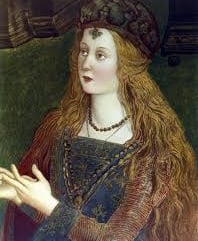

Send email to :
© 2025. All rights reserved.
Quality Health and Wellness Insights
Enjoy the history that made us.
Everyday simple technology